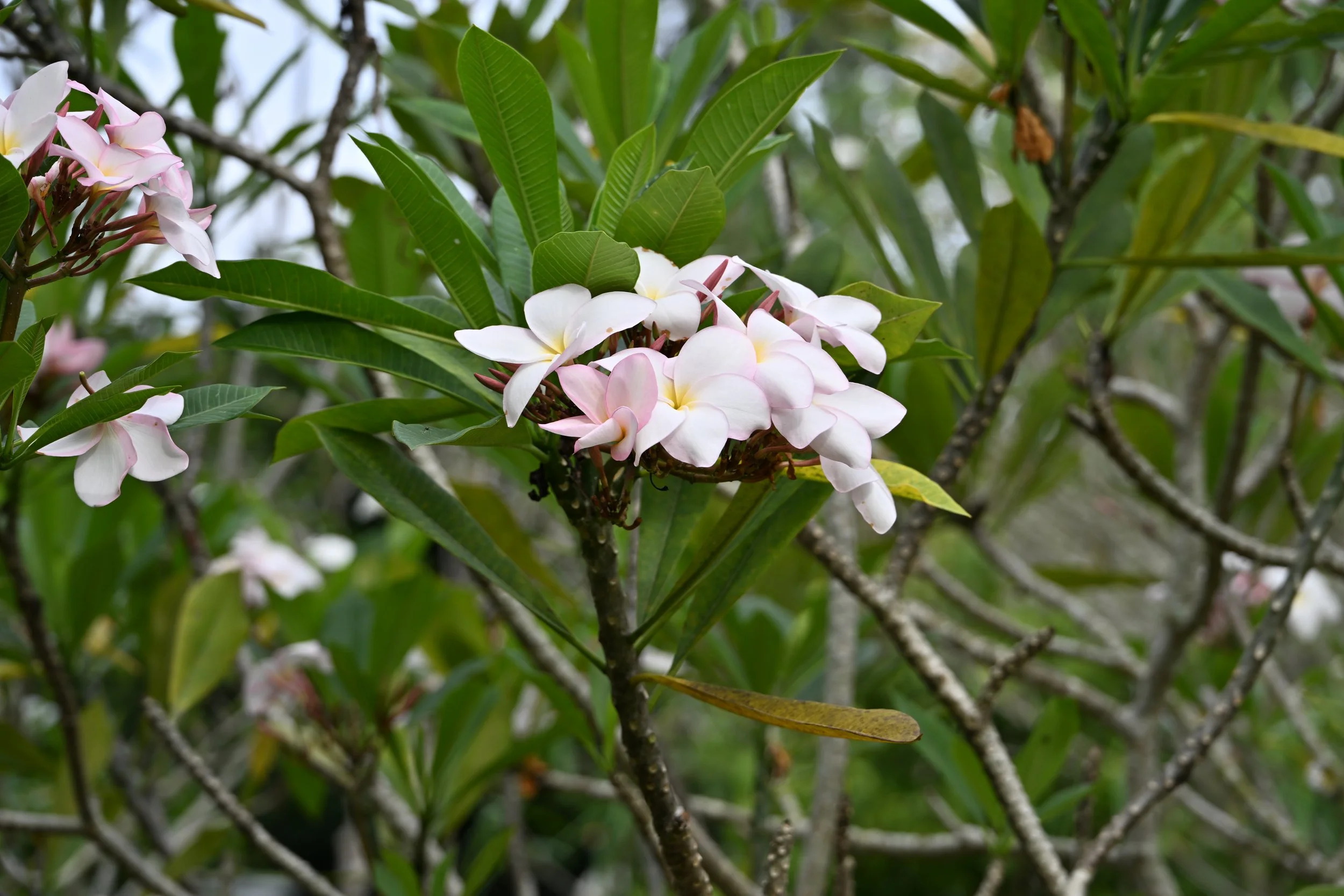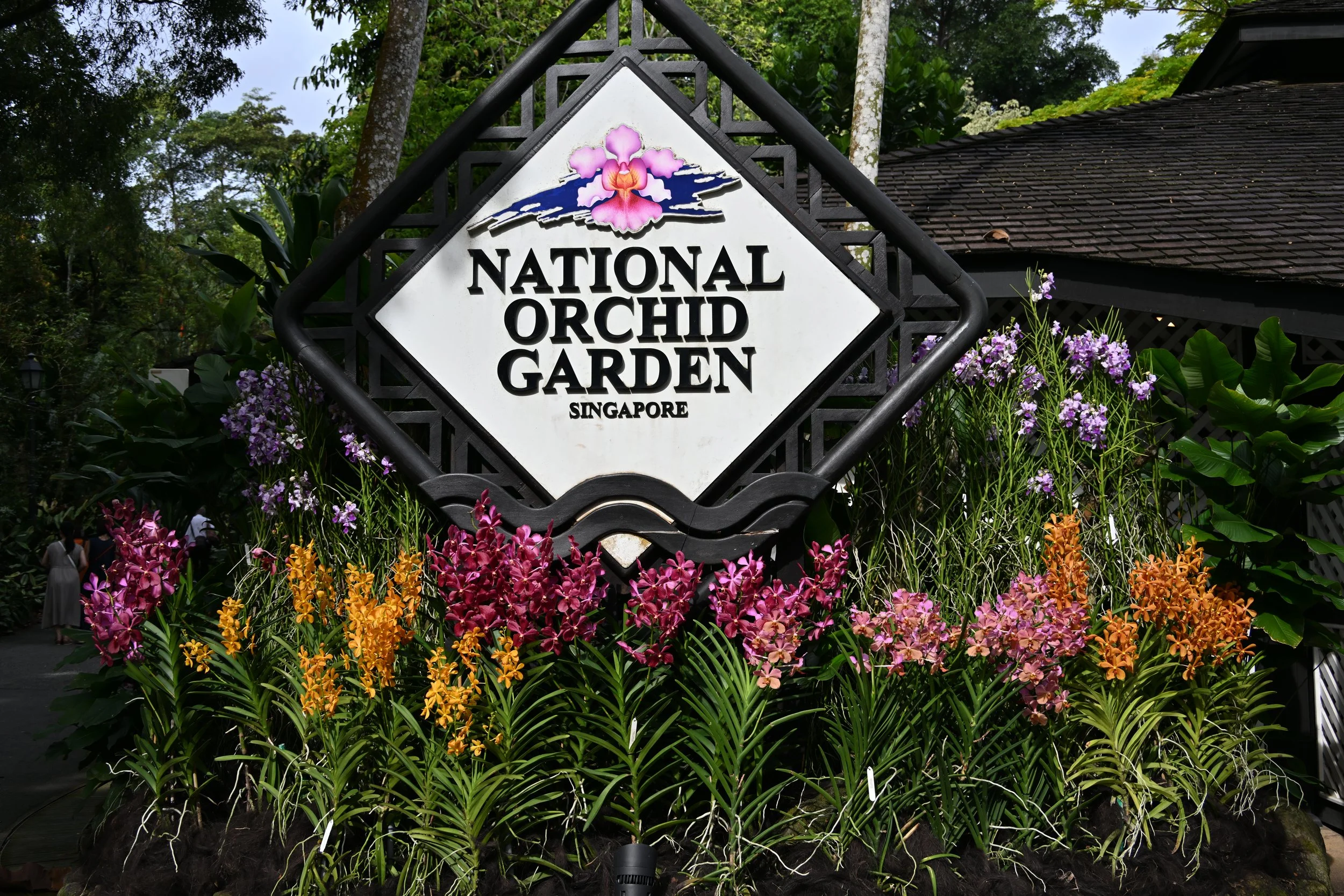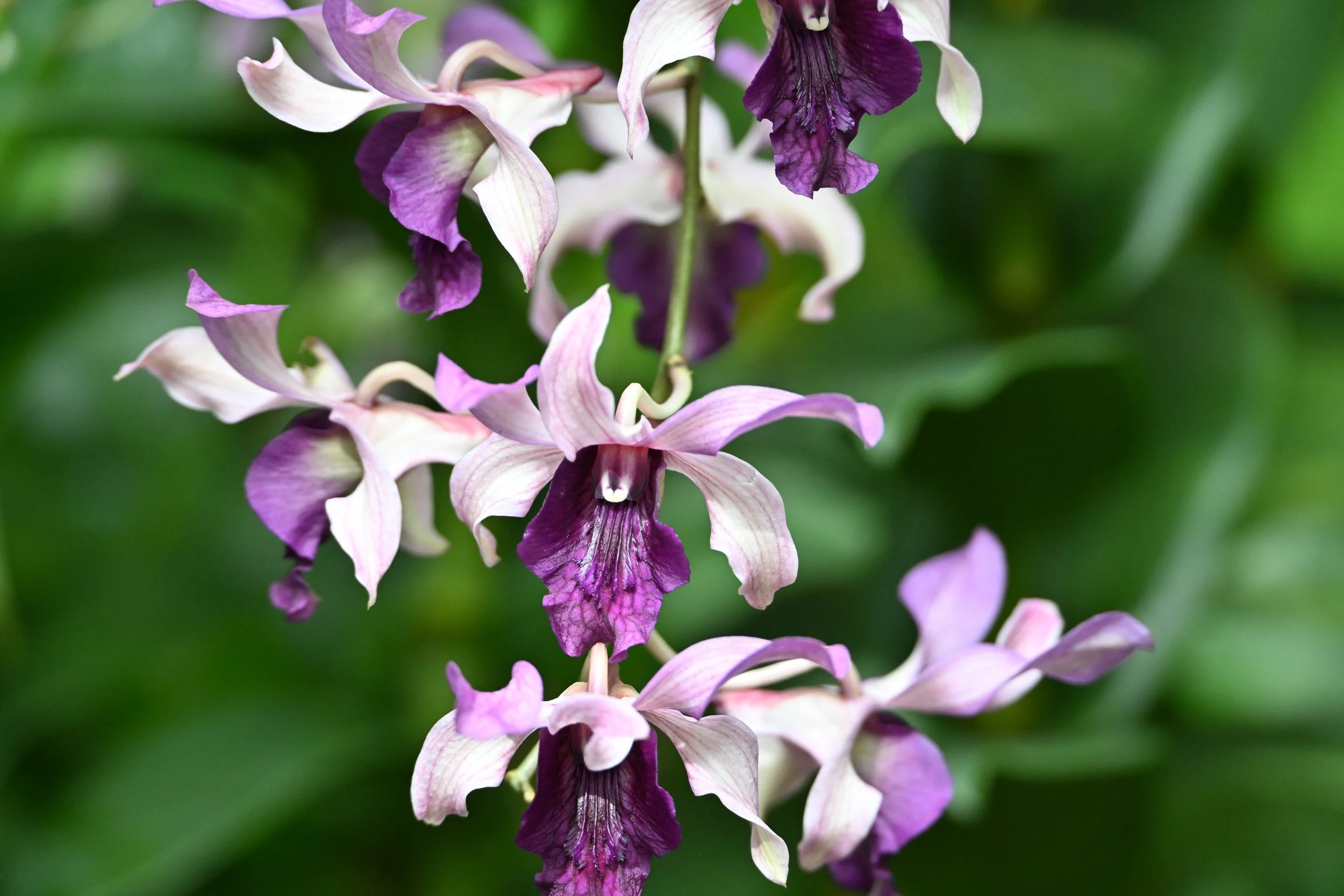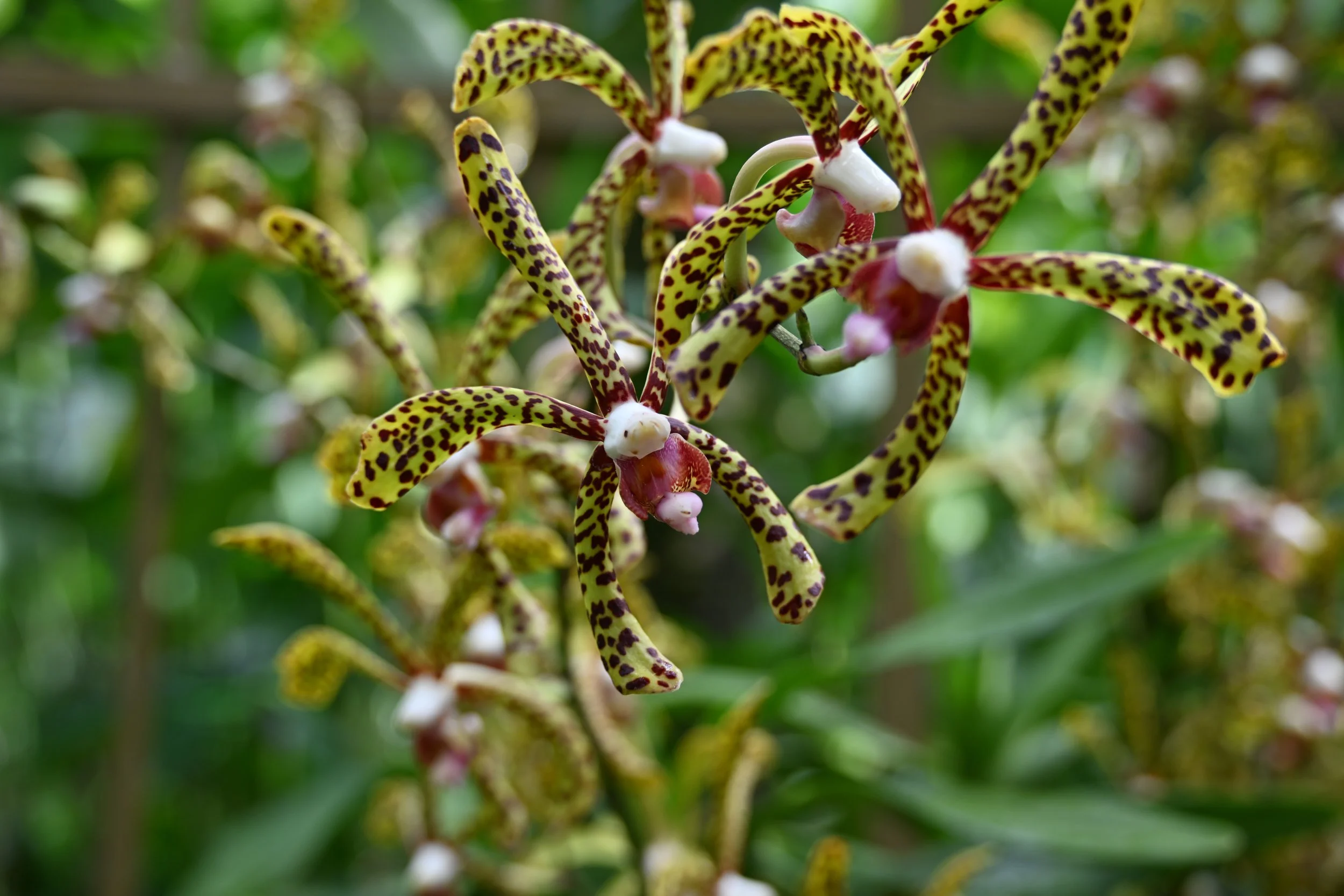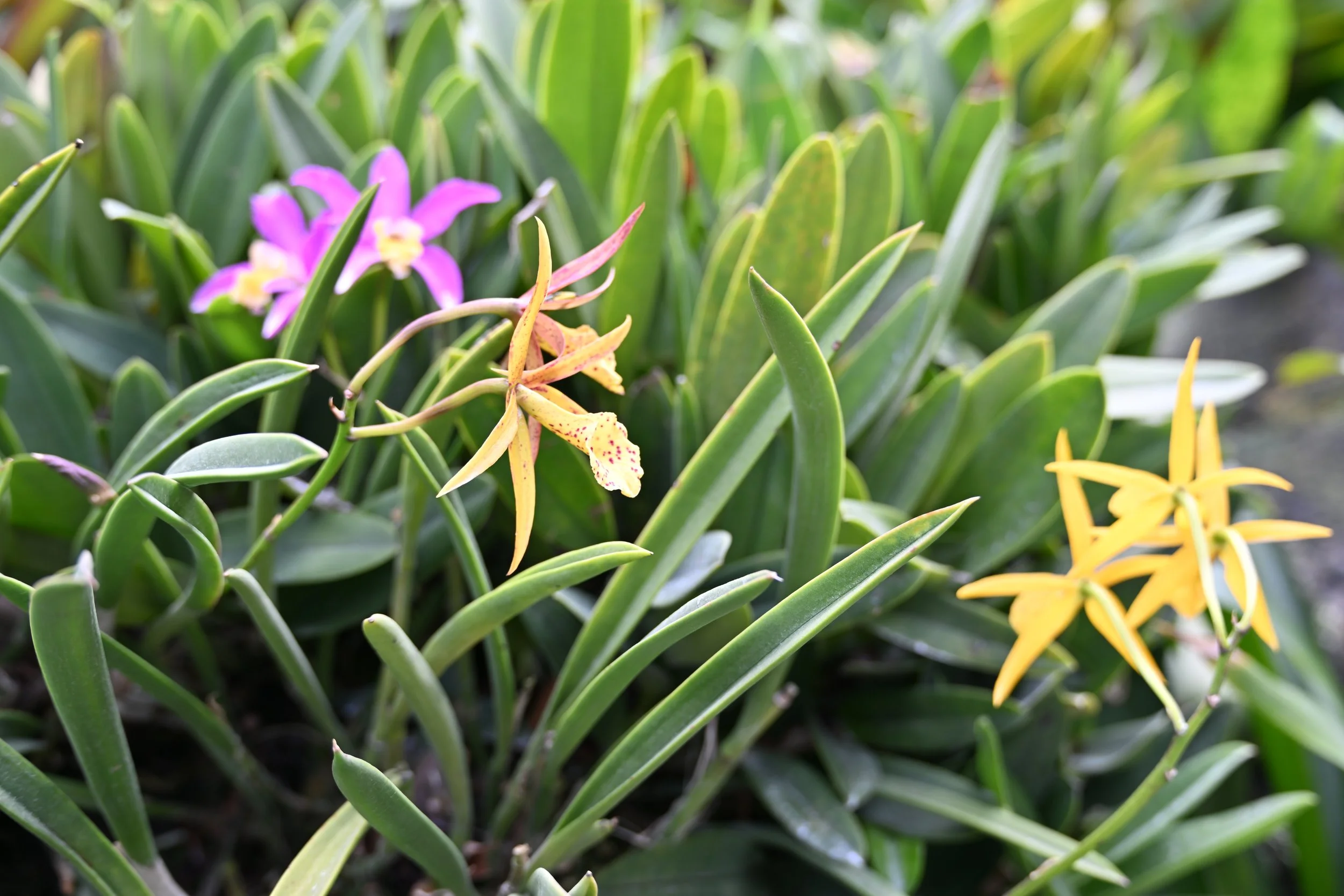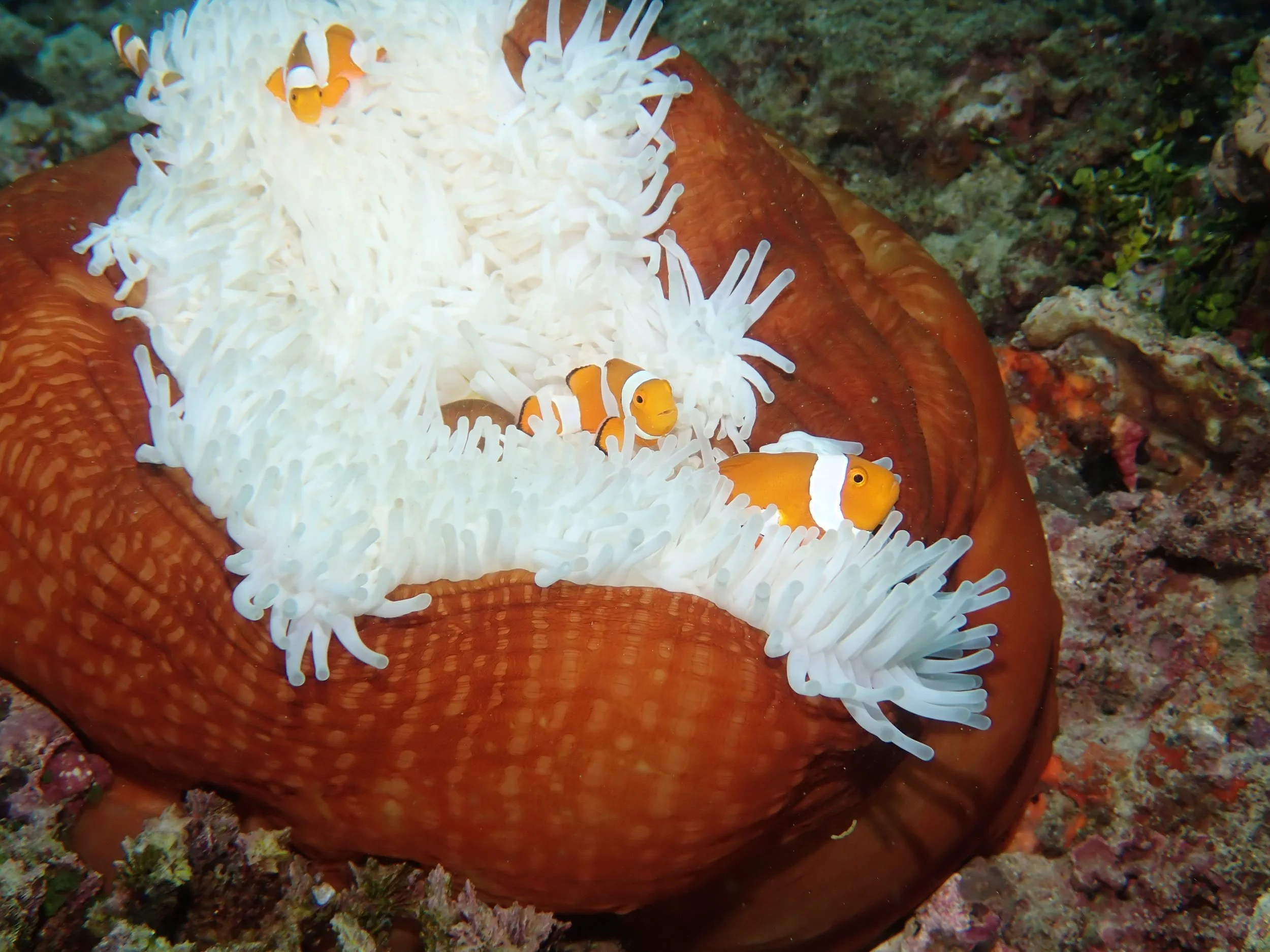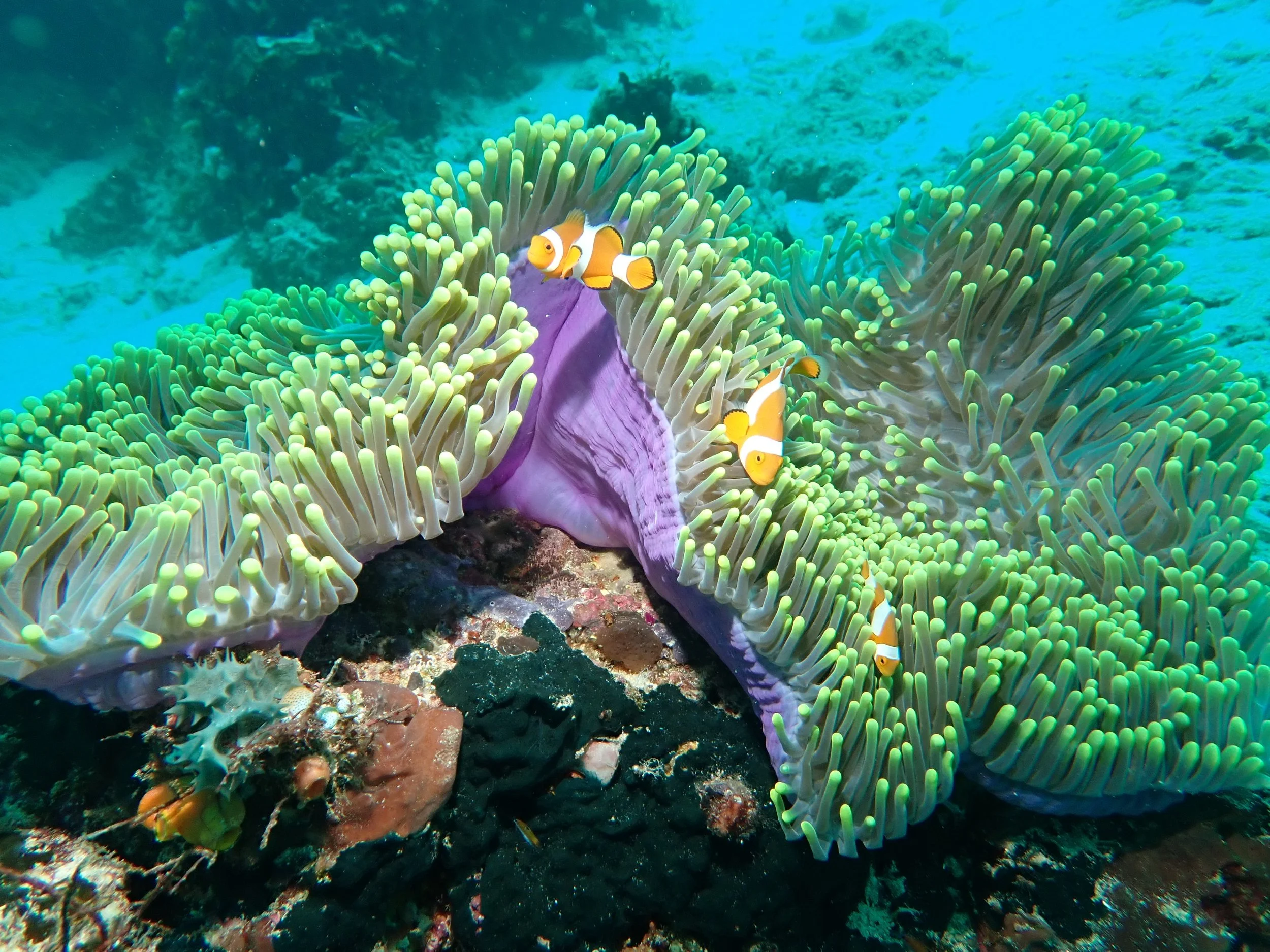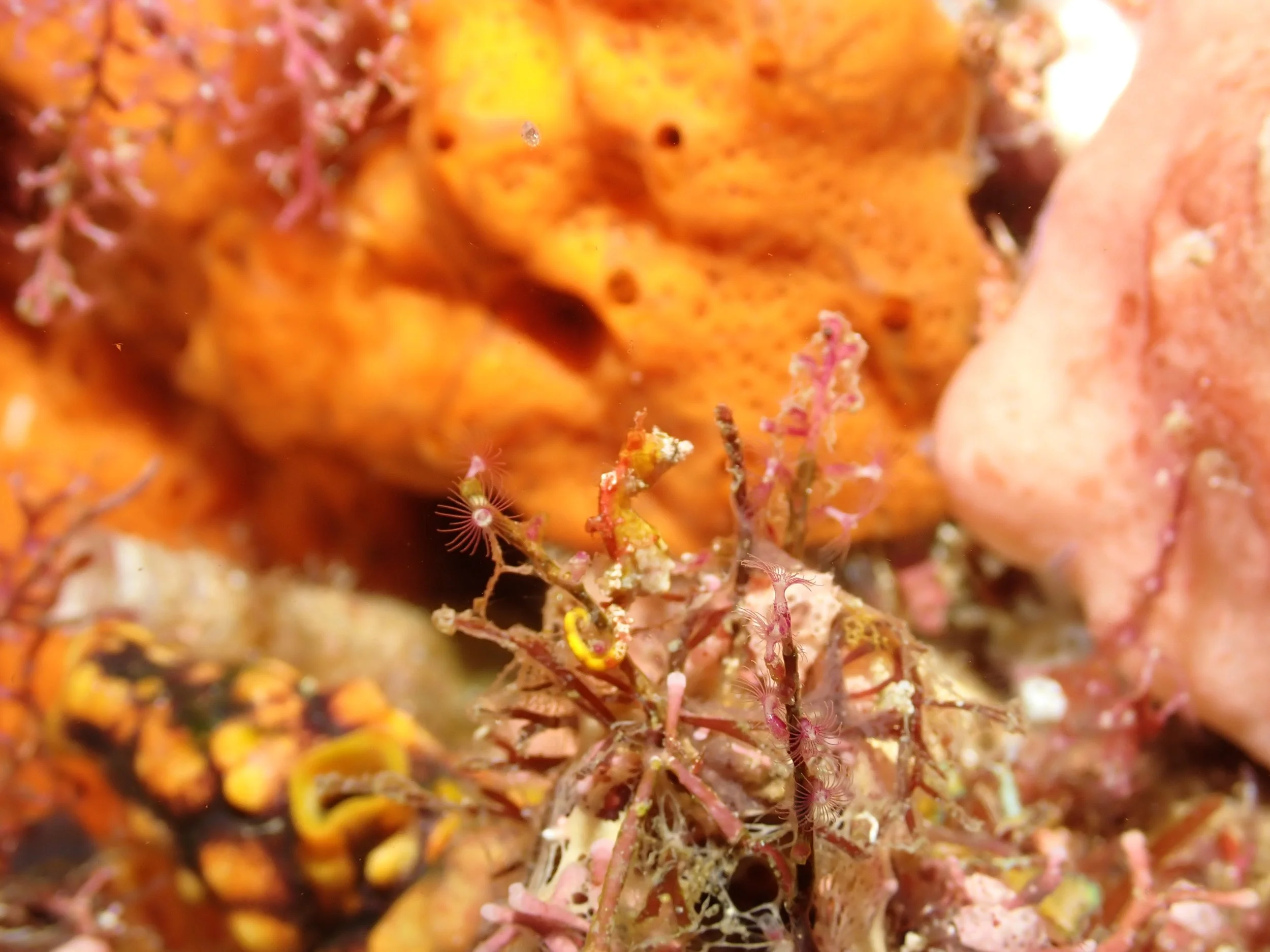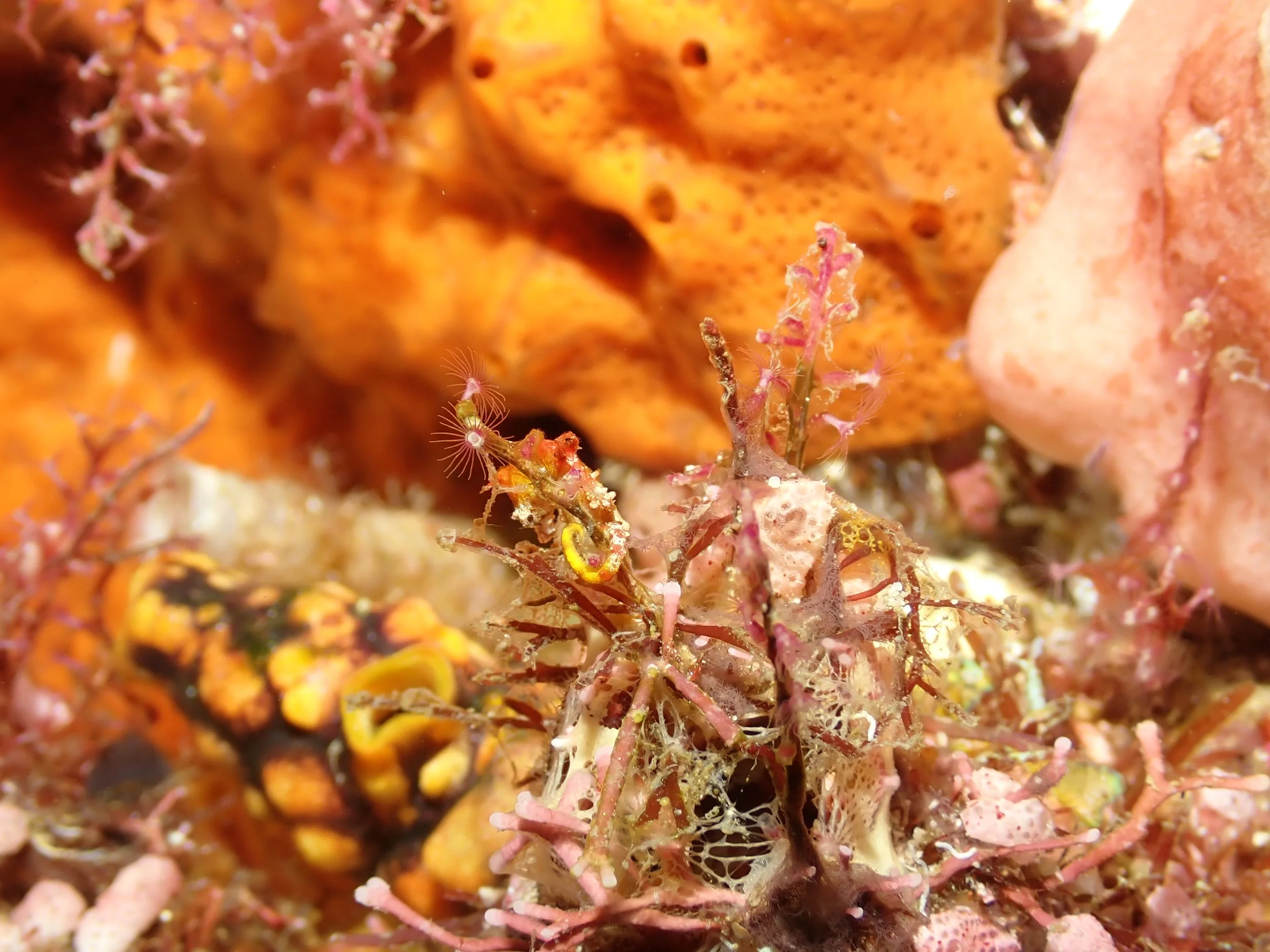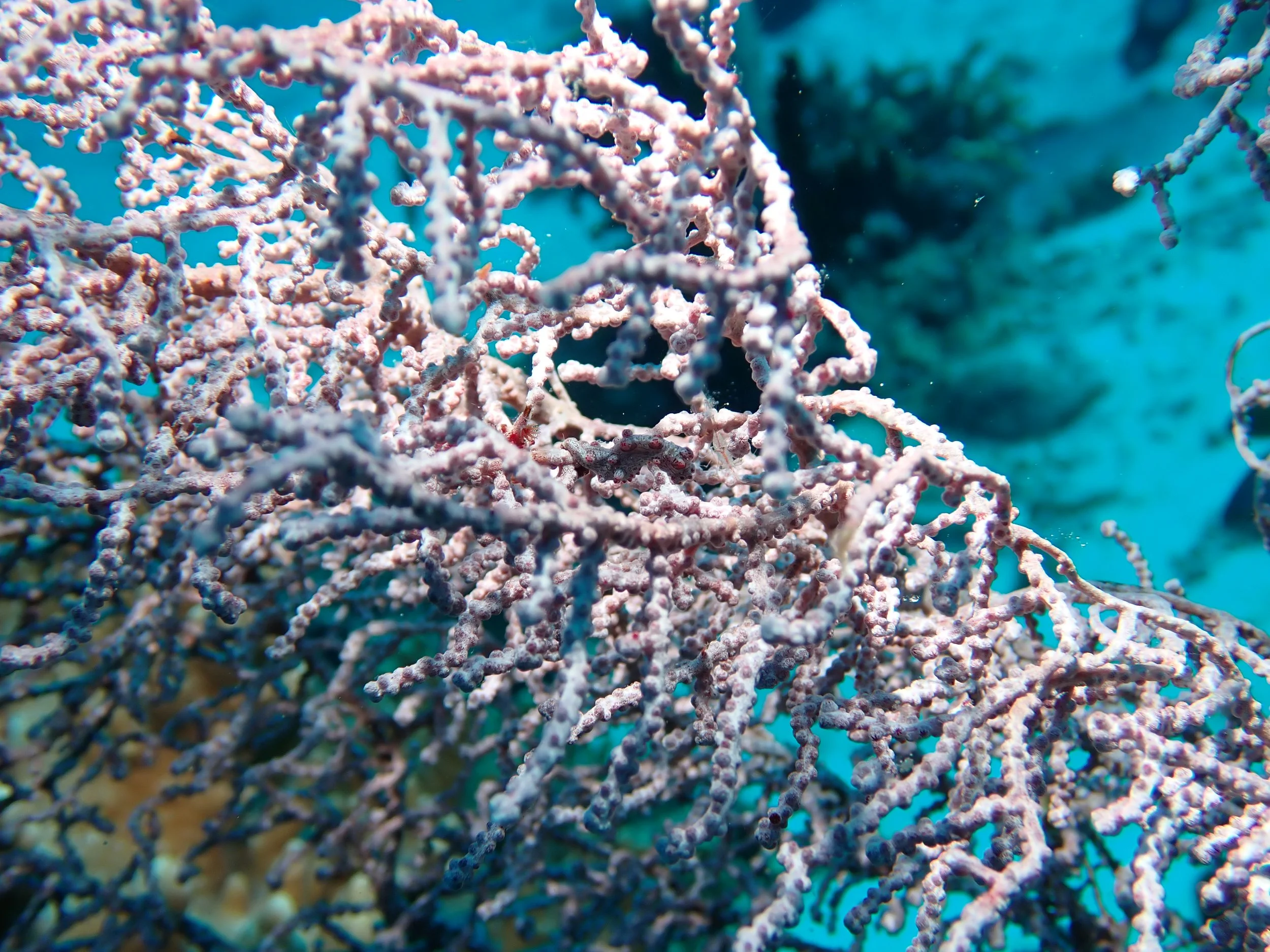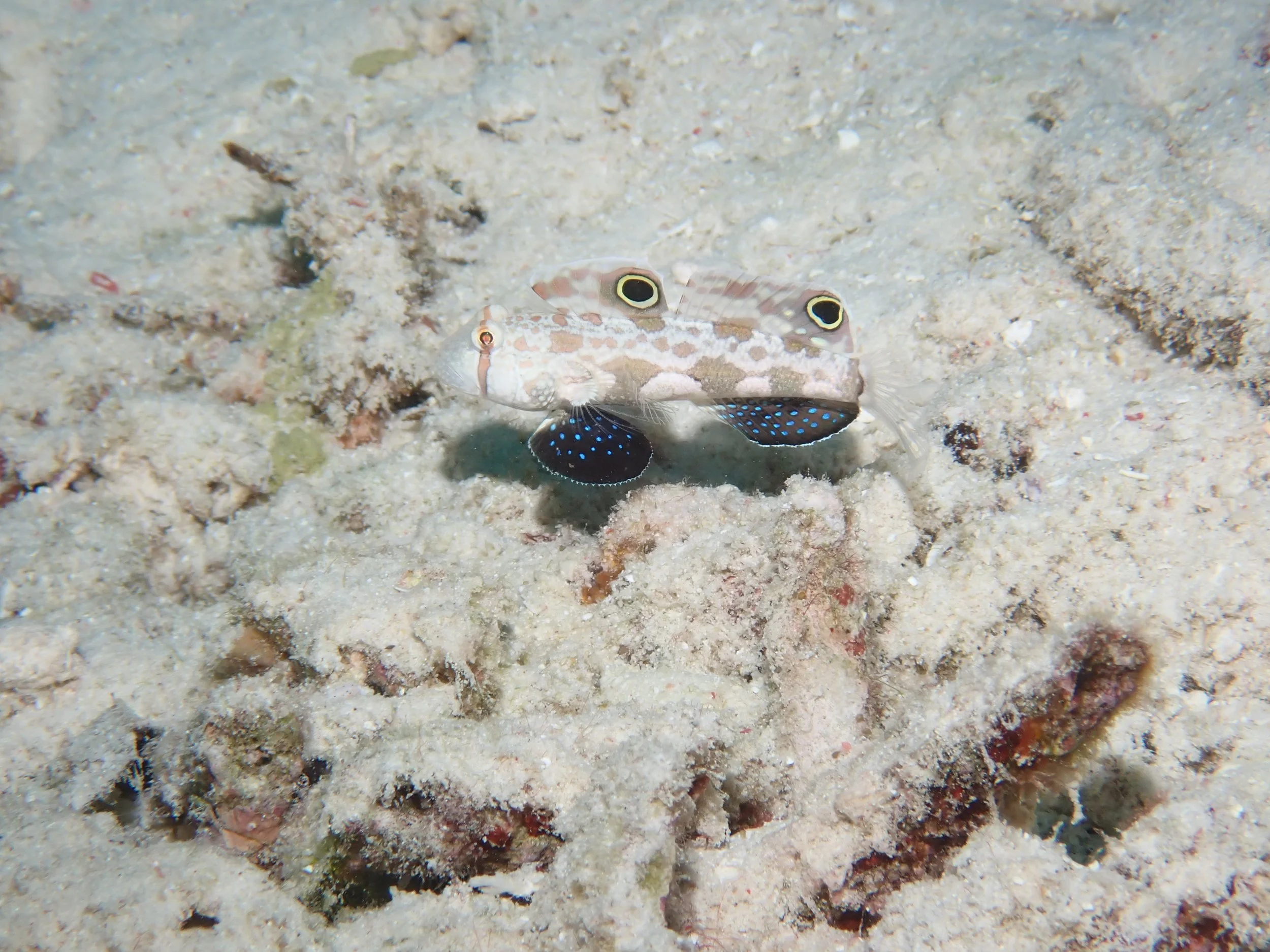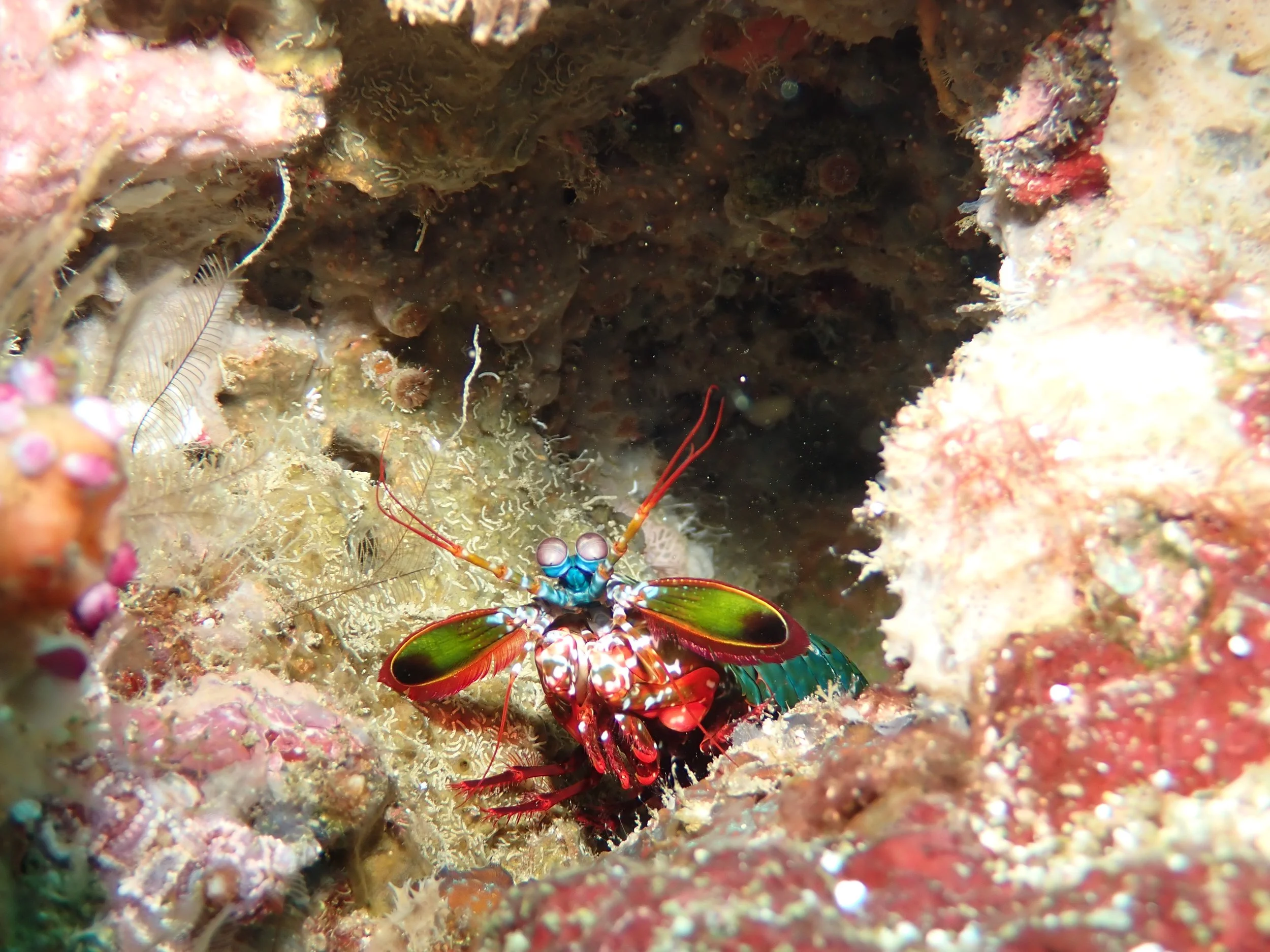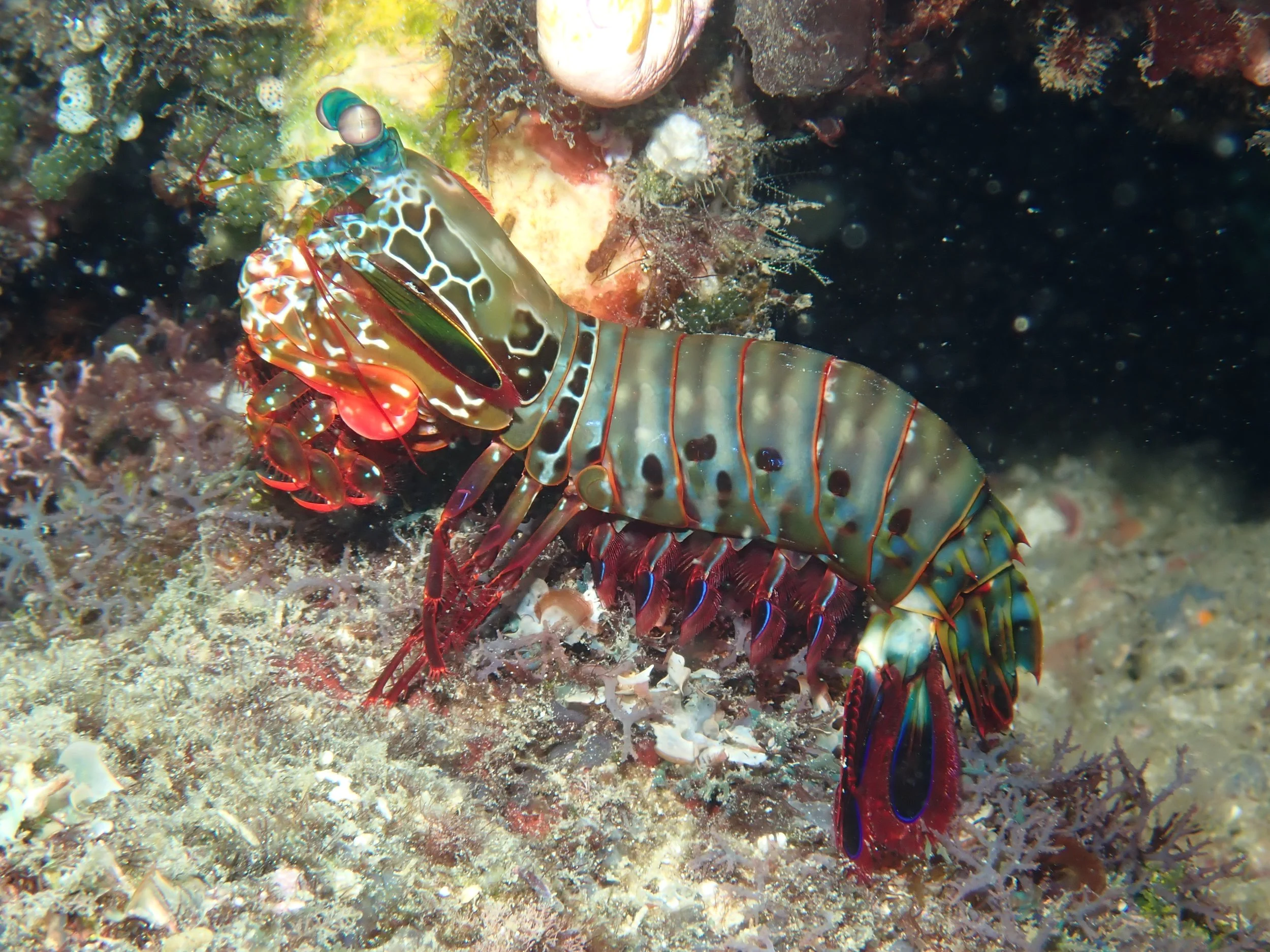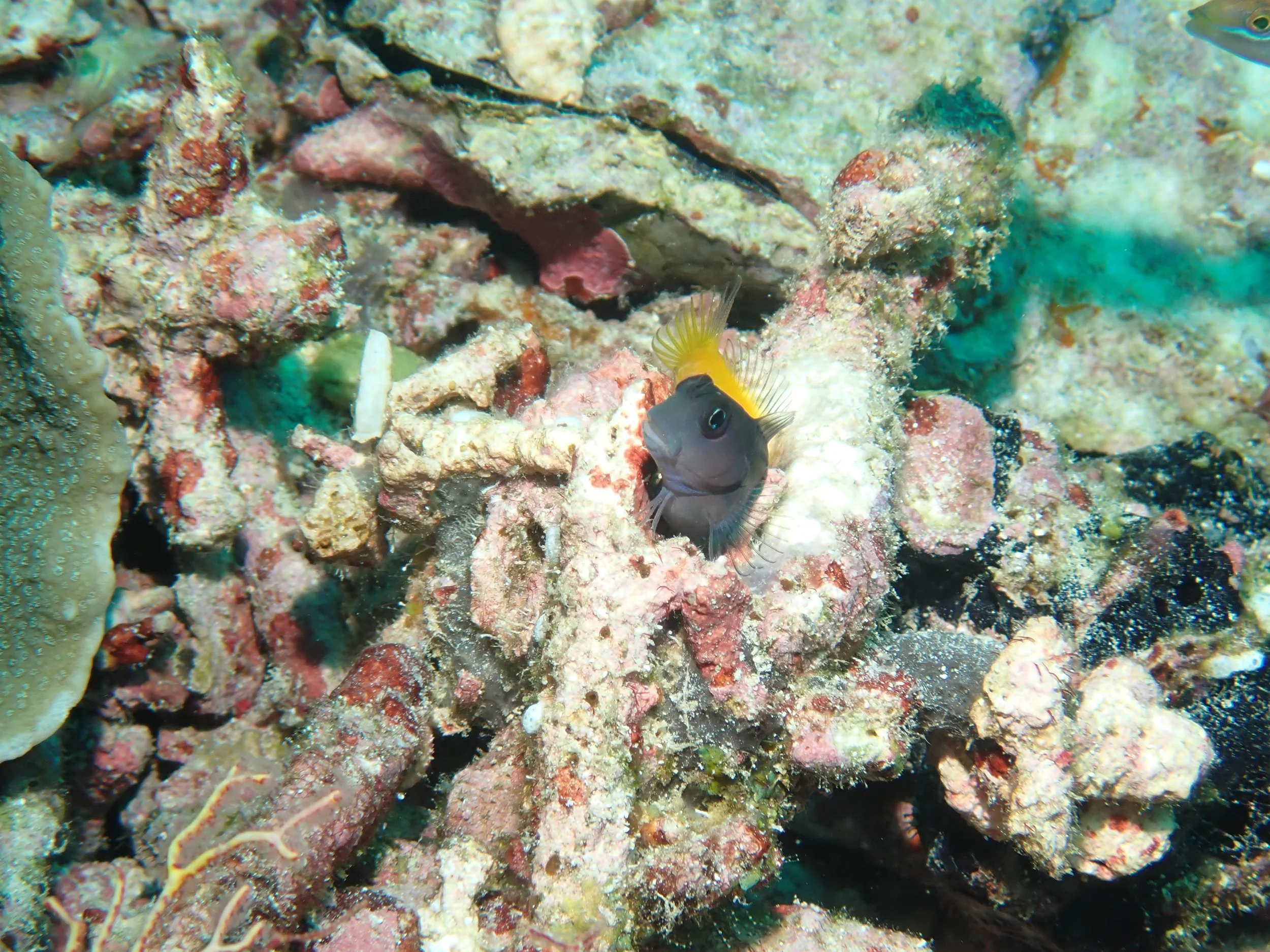Singapore
Last time we were here, we focused on Gardens by the Bay. This time we ate our way through Hawker’s Markets for street food, marveled at the Jewel in the Changi Airport, and walked through the Botanic Gardens.
For the Gardens, we headed out early to avoid the worst of the heat and humidity. Even so, we ended up getting pretty sweaty and sticky with the temp at 88 F/31 C and the humidity at 70% or more. There are numerous small gardens devoted to specific plants, like Frangipani…
… or certain architectural sites like this reflecting pool…
… but hands down, our favorite area was the…
There were over 1,00 species (!) here and it was interesting to learn that orchids make up 10% of the world’s flowering plants, with around 30,000 different species.
The variety of shapes and colors…
… was mind blowing.
This is a type of Lady’s Slipper orchid:
We definitely dawdled in the Cool House…
… as a welcome break from the heat and humidity.
The Jewel in Changi airport is a “nature-themed entertainment and retail complex”, complete with the world’s tallest indoor waterfall at 130 ft high!
I was mesmerized…
… by both the falling water, as well as the various levels at which you could see the waterfall (video, so open this post in your browser to see it) -
In the Hawker’s food markets, you can get a plate of food starting at $5-7, and try various regional specialties. On our previous stay, we had gone to a nice restaurant that specialized in Singapore Chili Crab in a sweet, salty, chili tomato sauce and paid $100 (figuring it was a one time splurge, so why not). I sought out the Hawker’s Market where you could get it for $38, and it was just as tasty (and a mess to eat).
In the upper right corner of the picture is a plate of Cereal Prawns, which I highly recommend as another dish to try when in Singapore.
We stayed in Chinatown again, as it’s easy to get around on the Metro, has innumerable restaurants and Hawker’s Markets, and is clean and walkable.
The view from our hotel rooftop -
I forgot to close my last post with a sunset, so I’ll do so here (jumping back to Indonesia for a moment) -
